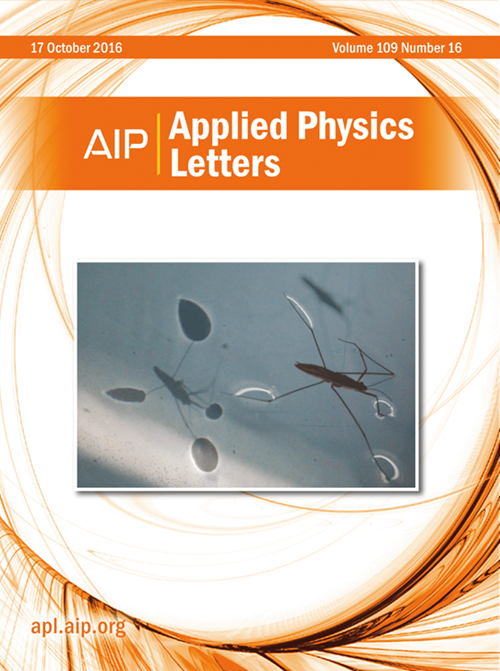Experiments on unidirectional excitation of designer flexural edge waves
IF 3.5
2区 物理与天体物理
Q2 PHYSICS, APPLIED
引用次数: 0
Abstract
We demonstrate the unidirectional propagation of structure-induced edge waves in a thin plate. These waves, termed designer flexural edge waves (DFEWs), are observed along the free edge of a thin plate featuring periodically corrugated rectangular grooves. These DFEWs can be activated unidirectionally using either a pair of point sources exhibiting phase differences or a “chiral” source characterized by a clockwise phase distribution, as evidenced in the experimental results. The observed asymmetric behavior in the former scenario is attributed to the destructive interference among the edge waves. In the latter scenario, we elucidate this phenomenon by analyzing the spatial Fourier spectrum. The chiral source induces a spatial asymmetry, while the periodic edge structure selects the specific evanescent components of the asymmetric Fourier spectrum.求助全文
约1分钟内获得全文
求助全文
来源期刊

Applied Physics Letters
物理-物理:应用
CiteScore
6.40
自引率
10.00%
发文量
1821
审稿时长
1.6 months
期刊介绍:
Applied Physics Letters (APL) features concise, up-to-date reports on significant new findings in applied physics. Emphasizing rapid dissemination of key data and new physical insights, APL offers prompt publication of new experimental and theoretical papers reporting applications of physics phenomena to all branches of science, engineering, and modern technology.
In addition to regular articles, the journal also publishes invited Fast Track, Perspectives, and in-depth Editorials which report on cutting-edge areas in applied physics.
APL Perspectives are forward-looking invited letters which highlight recent developments or discoveries. Emphasis is placed on very recent developments, potentially disruptive technologies, open questions and possible solutions. They also include a mini-roadmap detailing where the community should direct efforts in order for the phenomena to be viable for application and the challenges associated with meeting that performance threshold. Perspectives are characterized by personal viewpoints and opinions of recognized experts in the field.
Fast Track articles are invited original research articles that report results that are particularly novel and important or provide a significant advancement in an emerging field. Because of the urgency and scientific importance of the work, the peer review process is accelerated. If, during the review process, it becomes apparent that the paper does not meet the Fast Track criterion, it is returned to a normal track.
 求助内容:
求助内容: 应助结果提醒方式:
应助结果提醒方式:


